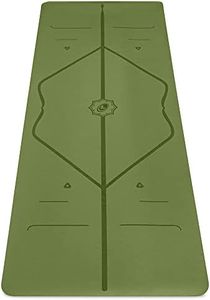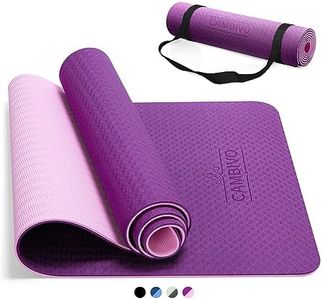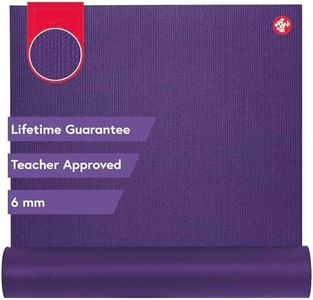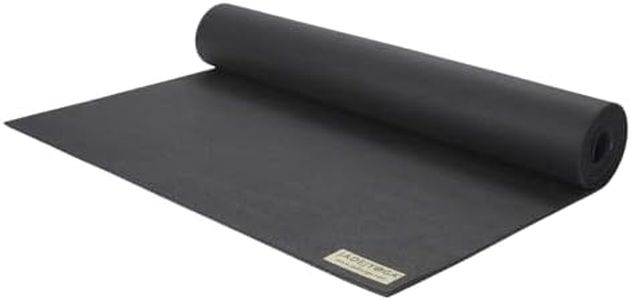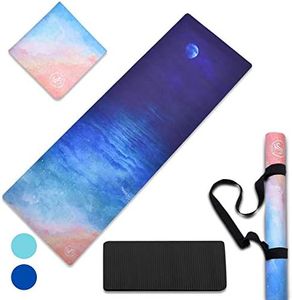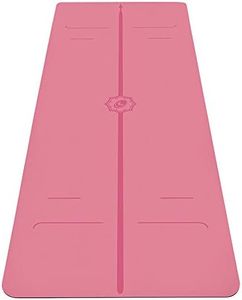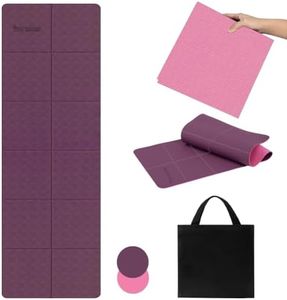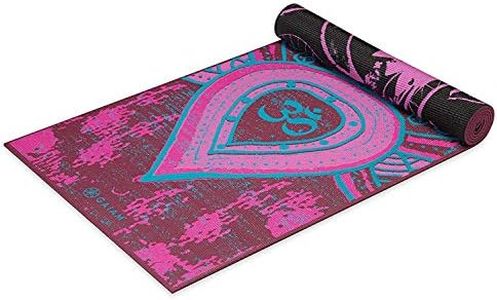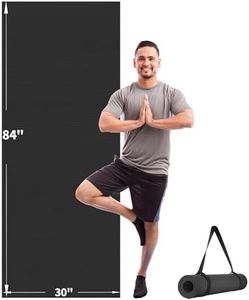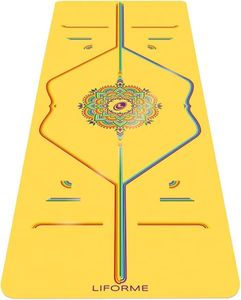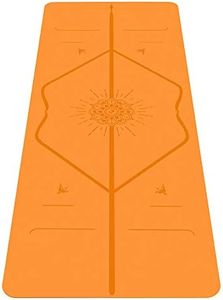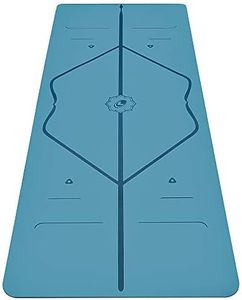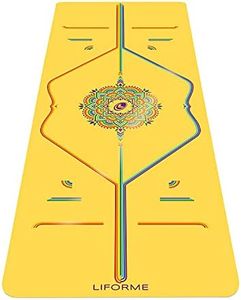We Use CookiesWe use cookies to enhance the security, performance,
functionality and for analytical and promotional activities. By continuing to browse this site you
are agreeing to our privacy policy
10 Best Travel Yoga Mats
From leading brands and best sellers available on the web.Buying Guide for the Best Travel Yoga Mats
Choosing the right travel yoga mat is all about finding the perfect balance between portability, comfort, and durability for your personal practice style and travel habits. Since a travel yoga mat is meant to be lightweight and easy to carry, it's important to consider where and how you'll be using it—whether on daily commutes, weekend trips, or long international journeys. Think about your main priorities: is packability most important, or do you need a mat that offers extra grip or cushioning for longer sessions? By understanding the main features that set travel mats apart, you can confidently select one that fits your lifestyle and supports your yoga wherever you go.WeightWeight is essentially how heavy the yoga mat is, and it matters because, as a travel yoga mat, you want something lightweight so it doesn't become a burden in your luggage or bag. Mats typically range from ultra-light models under 1kg, which are best for minimalist travelers or those who prioritize portability above all else, to slightly heavier options around 1-2kg that may provide more comfort. If you travel frequently by plane, train, or on foot, a lighter mat is preferable. If you're okay with a bit of extra weight for greater comfort, a slightly heavier mat might be the right choice for you.
ThicknessThickness refers to how much padding the mat provides, affecting both comfort and portability. Travel mats are generally thinner, usually between 1mm and 3mm, making them easier to fold or roll into a compact size. Thinner mats (1-2mm) are highly portable, easiest to pack, and ideal if you often practice on carpets or already soft surfaces, but may feel hard on joints. Thicker mats (2-3mm) offer more cushioning, better for sensitive knees or practice on hard floors, but can take up slightly more space in your bag. If joint support is important to you, go a bit thicker; if saving space is your top priority, choose the thinnest option.
MaterialThe material of a travel yoga mat affects its weight, texture, grip, and ease of cleaning. Common materials include PVC (durable, easy to clean, but less eco-friendly), TPE (lighter, often more eco-friendly, decent grip), and various types of rubber (natural, good grip, slightly heavier, may have a smell at first). For those who practice in hot or sweaty conditions, a grippy, non-slip material is essential. If you have allergies or sensitivities, pay attention to whether the mat is latex-free or made from natural sources. Your choice should reflect your environmental concerns, grip preferences, and sensitivity to different materials.
Grip/TextureGrip refers to how well the mat prevents slipping during practice. It's important for safety, especially if your hands or feet get sweaty, or if you practice dynamic or balance-heavy poses. Textured mats tend to provide more grip and are better for hot yoga or energetic flows, while smoother mats might be sufficient for gentle or restorative practices. If you find your hands slipping during practice, prioritize a mat marketed for its high grip; if you tend to do slower-paced or meditative yoga, grip may be less critical.
PackabilityPackability describes how easily the mat can be folded or rolled and stored in your luggage or backpack. Travel mats are designed to be thin enough to fold into a small square or rolled tightly, so consider how you plan to carry it. If you're looking for the absolute smallest folded size, opt for a mat specifically labeled as 'foldable' rather than just 'lightweight.' Your decision should depend on your usual luggage size and how much space you can devote to a mat—the more compact, the better for carry-on bags or backpacks.
DurabilityDurability is how well the mat stands up to frequent use, folding, and cleaning. Travel mats are often thinner and made to be lightweight, which can sometimes mean sacrificing longevity. Some materials, like natural rubber or TPE, offer a good balance of lightness and resilience, while extremely lightweight mats may wear out faster if used on rough surfaces. If you practice daily or travel often, look for mats noted for their durability. If your travels are occasional, a less rugged mat might suffice.
Ease of CleaningEase of cleaning is important since you’ll be using your mat in different places, possibly on dirty floors or outdoors. Some materials are naturally more stain-resistant and can be easily wiped down with a damp cloth, while others may require gentle washing. If you value low-maintenance gear or tend to practice in varied locations, seek out mats that are easy to clean and quick to dry. Your choice here should reflect your willingness and ability to regularly clean your mat while on the go.
